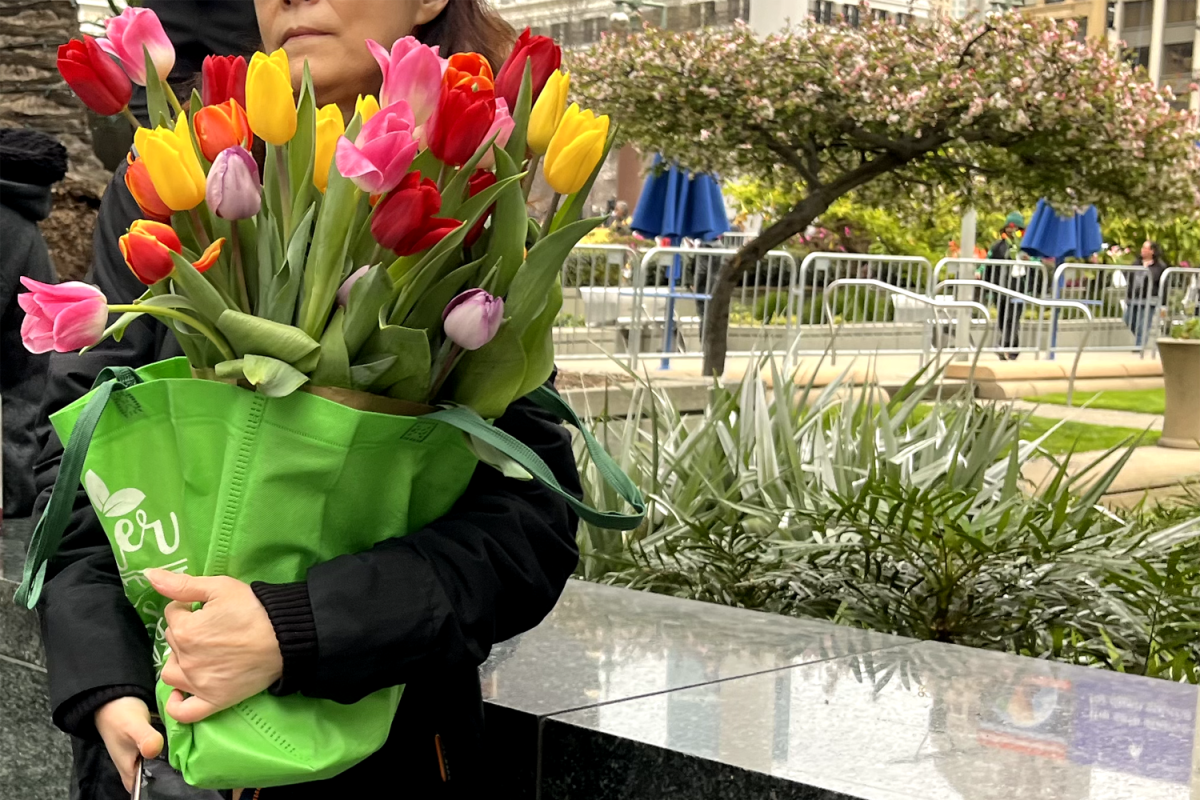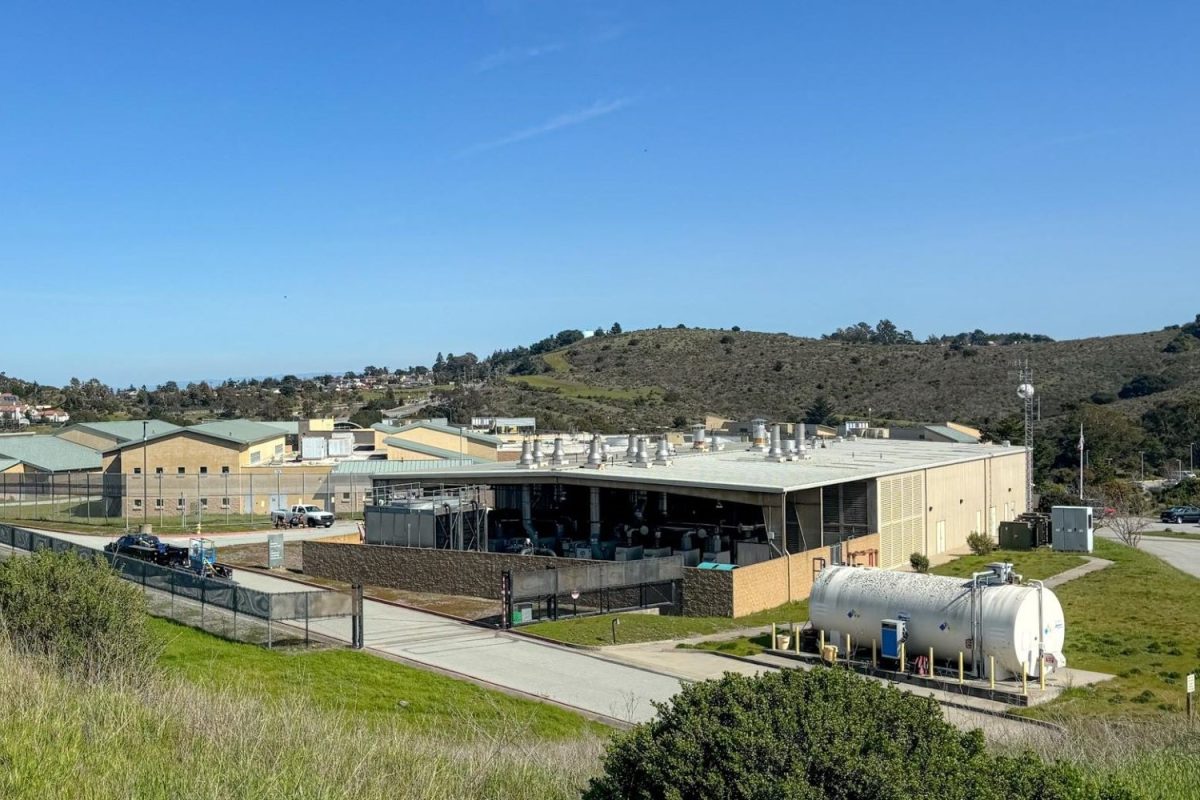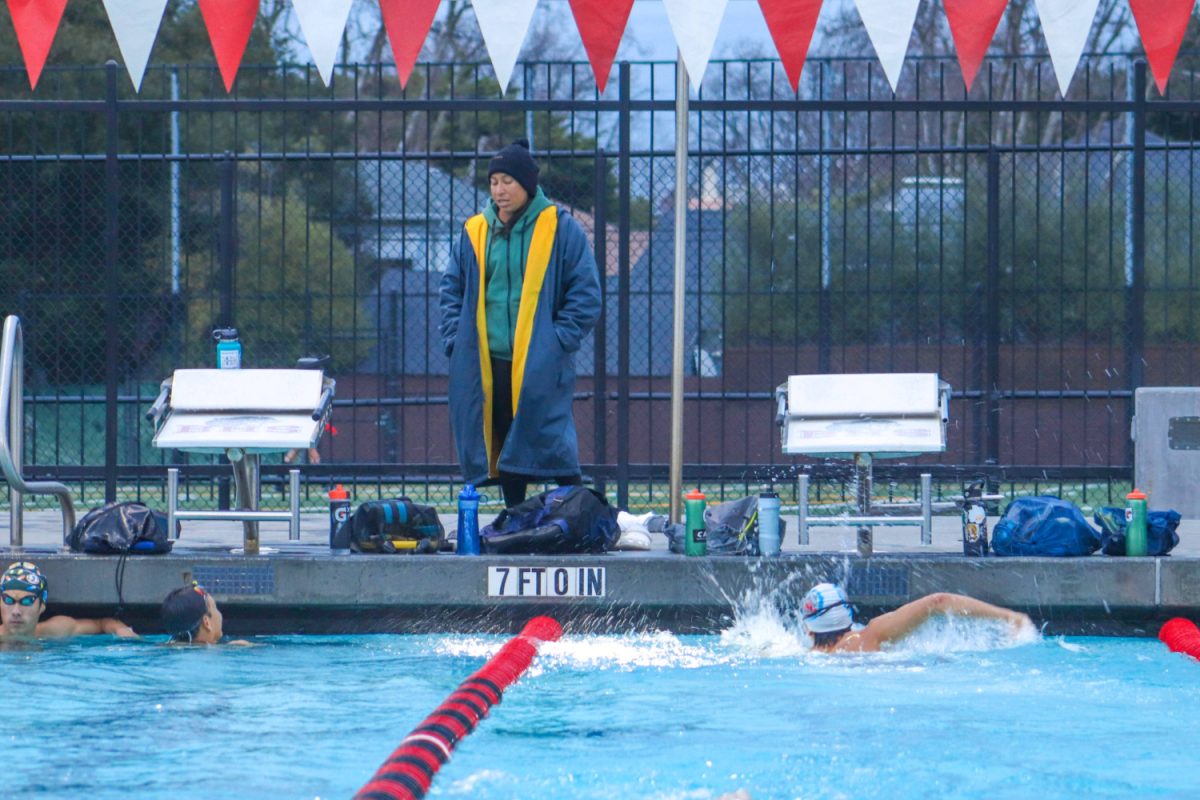The University of California (UC), Berkeley’s Sproul Plaza welcomed passionate activists last Saturday for a nationwide abortion rights protest. Attendees painted signs and passed out flyers and bandanas to people passing by. Leaders holding megaphones prompted chants, recounted personal stories, and even sang songs about abortion rights.
As participants gathered, two groups formed. One was large, lively, and dynamic; overwhelmed by women in the color green who held posters that read: “Women aren’t baby-making machines, women are full human beings,” “We won’t take your fascist [explitive deleted],” and “Pro-life your names a lie, you don’t care if people die.”
The other was smaller, a static crowd of 10-15 people. They held up posters of the opposing view which read: “Save the babies,” “Babies have fundamental rights,” and “I am the pro-life generation.”
Among the women in green was Magnolia Orleans, a teacher who felt that her occupation influenced why she had gone to protests on this matter for decades.
“I am a [retired] teacher, so I care about children, babies, and families. And I see how they live, and they need a choice, from contraception and abortion, if that’s needed,” Orleans said.
Most pro-choice advocates at the protest were dressed head-to-toe in green shirts, pants, and flags, one even showing off their dyed green hair. The green color represented a movement that started in Latin America.
In 2018, a group of Argentinian feminist students wore green as they protested for abortion rights outside their congress building. Their continued protesting resulted in legalized abortion for Argentina. The color green also came to symbolize legalized abortion across Latin America in the Green Tide movement.
RiseUp4AbortionRights organized recent nationwide abortion rights protests to continue the Green Tide movement. The April 9 protests were the most recent in this series of national Green Wave events.
Although the protest was nationwide, the impact proved weak on a local level, according to Luiza Nunes, a protest organizer and Carlmont junior.
“We were definitely disappointed with the lack of people that we got to engage with the protests… I did a lot of outreach at school and a lot of people participated in wearing green, but not many people seemed to care enough to actually show up to the protests on Saturday,” Nunes said.
The turnout of pro-choice protestors disappointed Nunes, but the low turnout of another group relieved her, as the Berkeley protest had anticipated a violent response that did not occur.
“We always expect a counter-protest, especially in Berkeley. For the protest on Saturday, we expected a much more violent backlash. We got threats from a group of proud boys to come and disrupt us so we planned for violent attacks. Thankfully, they didn’t show,” Nunes said.
Instead, the abortion rights protest was met with a pro-life protest. The two marches conducted themselves very differently. While the pro-choice protest had been organized and long-anticipated, the opposing protest seemed spontaneous, with attendees barely uttering a word as they stood there holding up signs.
The anti-abortion protest continued in the plaza as pro-choice activists marched past the UC Berkeley dorms, urging students to come down and join the fight, which very few did.
Protest organizers for both groups rely on spontaneous participation from students on campus to reach their desired protest impact. Since the April 9th protests happened over UC Berkeley’s spring break, neither group could get many protesters that didn’t plan on being there.
However, despite the unprecedented lack of turnout, Many women, including Iris Ziligian, will continue participating until their demands are met.
“We’ve been going [to abortion rights protests] since we were 18, about 50 years, and will continue going to protests until we obtain our desired result,” Ziligian said.
























